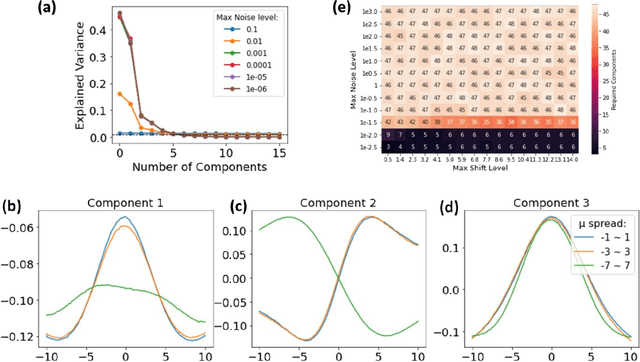Yogesh Sharma
Decoding the shift-invariant data: applications for band-excitation scanning probe microscopy
Apr 20, 2021



Abstract:A shift-invariant variational autoencoder (shift-VAE) is developed as an unsupervised method for the analysis of spectral data in the presence of shifts along the parameter axis, disentangling the physically-relevant shifts from other latent variables. Using synthetic data sets, we show that the shift-VAE latent variables closely match the ground truth parameters. The shift VAE is extended towards the analysis of band-excitation piezoresponse force microscopy (BE-PFM) data, disentangling the resonance frequency shifts from the peak shape parameters in a model-free unsupervised manner. The extensions of this approach towards denoising of data and model-free dimensionality reduction in imaging and spectroscopic data are further demonstrated. This approach is universal and can also be extended to analysis of X-ray diffraction, photoluminescence, Raman spectra, and other data sets.
Integrating Objects into Monocular SLAM: Line Based Category Specific Models
May 12, 2019



Abstract:We propose a novel Line based parameterization for category specific CAD models. The proposed parameterization associates 3D category-specific CAD model and object under consideration using a dictionary based RANSAC method that uses object Viewpoints as prior and edges detected in the respective intensity image of the scene. The association problem is posed as a classical Geometry problem rather than being dataset driven, thus saving the time and labour that one invests in annotating dataset to train Keypoint Network for different category objects. Besides eliminating the need of dataset preparation, the approach also speeds up the entire process as this method processes the image only once for all objects, thus eliminating the need of invoking the network for every object in an image across all images. A 3D-2D edge association module followed by a resection algorithm for lines is used to recover object poses. The formulation optimizes for shape and pose of the object, thus aiding in recovering object 3D structure more accurately. Finally, a Factor Graph formulation is used to combine object poses with camera odometry to formulate a SLAM problem.
 Add to Chrome
Add to Chrome Add to Firefox
Add to Firefox Add to Edge
Add to Edge